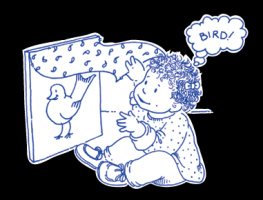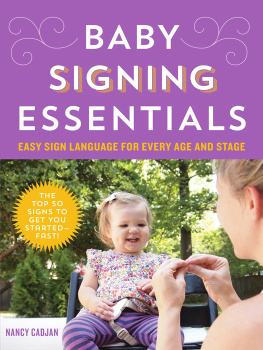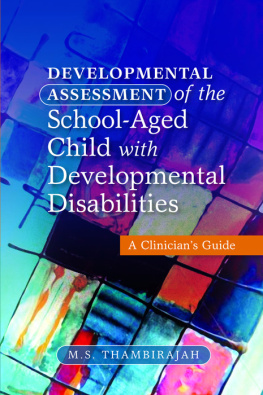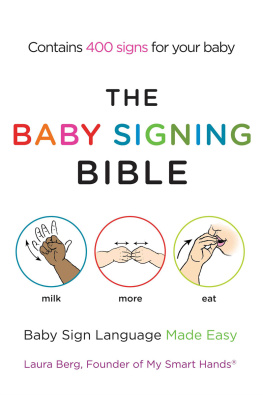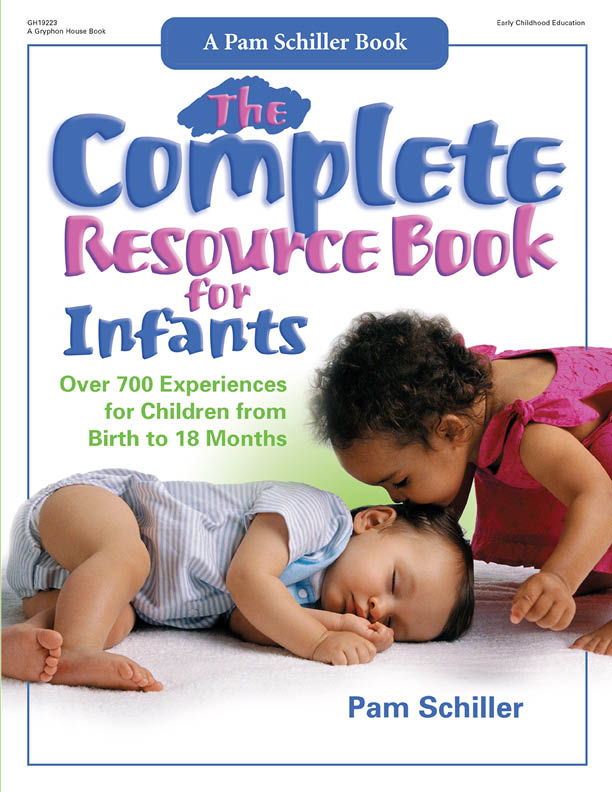Contents
The Complete Resource Book for Infants
Over 700 Experiences
for Children from
Birth to 18 Months
Pam Schiller
Photographs by Mary Duru
Illustrations by Deborah Wright
gryphon house
Lewisville, NC
Dedication
To Baby Evan and Baby Quinnmay your journeys be filled with wonder!
2005 Pam Schiller
Printed in the United States of America.
Published by Gryphon House, Inc.
PO Box 10, Lewisville, NC 27023
800.638.0928 (toll-free); 877.638.7576 (fax)
Visit us on the web at www.gryphonhouse.com
All rights reserved. No part of this publication may be reproduced, stored in a retrieval system or transmitted in any form or by any means, electronic, mechanical, photocopying, recording or otherwise, without the prior written permission of the publisher.
Reprinted June 2014
Library of Congress Cataloging-in-Publication Data
Schiller, Pamela Byrne.
The complete resource book for infants : experiences for children from
birth to 18 months / Pam Schiller ; illustrations by Deborah Wright.
p. cm.
Summary: Resource book for teachers of children ages birth to 18
months, including information on creating an appropriate environment, and
activities to use in the classroom--Provided by publisher.
Includes bibliographical references and index.
ISBN: 978-0-87659-295-3
1. Infants. I. Title.
HQ774.S333 2005
2005003164
Bulk purchase
Grypho n House books are available for special premiums and sales promotions as well as for fund-raising use. Special editions or book excerpts also can be created to specification. For details, contact the Director of Marketing at Gryphon House.
Disclaimer
Gryphon House, Inc. and the author cannot be held responsible for damage, mishap, or injury incurred during the use of or because of activities in this book. Appropriate and reasonable caution and adult supervision of children involved in activities and corresponding to the age and capability of each child involved, is recommended at all times. Do not leave children unattended at any time. Observe safety and caution at all times.
Every effort has been made to locate copyright and permission information.
Introduction
Preparing the Infant Learning Environment
There is a high level of agreement among experts about the primary characteristics of a quality infant learning environment:
The classroom must be safe.
The caregiver must be warm, loving, responsive, and permanent.
Communication between families and caregivers must be a priority.(Baker and Manfredi-Pettit, 2004)
The Classroom Must Be Safe
The learning environment includes everything that is inside and outside the classroom. Here are some suggestions for maintaining a safe environment.

1. Keep your attention on the children at all times. It is easy to become distracted as family members come and go, when one child demands attention, when preparing a bottle, and during other daily responsibilities; however, keeping your eye on all the children is essential to ensure their safety at all times.
2. Check toys daily to make sure that they are in good working condition. Watch for sharp edges and loose parts. Remove any that are unsafe and/or need to be repaired.
3. Keep electrical outlets covered.
4. Install latches on low cabinets and drawers.
5. Store toys in open containers. Avoid toy chests with lids because a child could become trapped inside.
6. Provide toys that can be washed easily.
7. Wash toys throughout the day. Babies put everything in their mouths.
8. Use a Small Object Tester (available from most school supply companies) to determine that toys are large enough that they cannot be swallowed. Remove any objects that are too small.
9. Check equipment once a week to identify items that may need repair, such as cribs with loose sides, feeding tables with loose straps, and so on. Check outdoor equipment for sharp edges and splintered wood. Repair or remove any equipment that needs it.
10. Provide plenty of space for crawling, creeping, and toddling. Avoid using walkers and carriers.
11. Keep diaper pails, trashcans, and other inappropriate items out of the reach of children.
12. Check the sides of cribs and trays of feeding tables to be sure they are locked in place at all times.
*This slogan is copyrighted. It comes printed on several items from Noodle Soup, a direct-mail business in Cleveland, Ohio. Call 800-795-9295 for a free copy of their catalog or check their website at www.noodlesoup.com.
The Caregiver Must Be Warm, Loving, Responsive, and Permanent
As a caregiver, you are a core component of the infant environment. You are responsible for understanding childrens stages of development; communicating with children, families, and other staff; and creating experiences and activities that maximize opportunities for childrens optimum growth and development.
Infants are at the most dramatic and dynamic stage of development of their lives: mentally, physically, socially, and emotionally. An infant caregiver plays a major role in each childs development. Knowing what is appropriate at each stage of development, staying informed with the latest information from early brain development research, and watching for cues from infants that indicate where they might be on the growth and development continuum are the basics that determine your interactions with each child.
Communication Between Families and Caregivers Must Be a Priority
Good communication is vital to your relationship with both infants and their families. Each infant needs to know that you are the primary source of support when family members are away. Your interactions with infants and your attention to their needs will help them learn this. Families, too, must be able to trust that you are standing in for them while they are away from their child. You will gain this special trust as they watch your relationship with their baby develop.
In addition, it is essential to communicate effectively with fellow staff members. Good communication enables the classroom routines and transitions to run smoothly. Transferring information effectively between yourself and other staff members, between yourself and families, and between yourself and the children will prevent turmoil later.
What Constitutes Infant Curriculum?
With older children, daily lessons focus on conceptual themes and are prepared around the structure of circle time activities and learning centers. Skills are integrated into instruction to provide intentionality (educational purpose). In infant classrooms, daily experiences focus on developmental domains or on the practice of a specific skill (infant accomplishments) and are prepared around spontaneous activities that are likely to occur in the context of daily care and routines.
The developmental domains that are the essential building blocks for infants are language, cognitive, social/emotional, and motor development. Many aspects of development occur in more than one domain. For example, cause and effect is a primary goal of both cognitive and social development during the first year of life. Although cause and effect is a cognitive and social/emotional goal, it will develop with experiences in all areas of development. For example, a babys understanding of the I coo, you listen, and then I coo again interchange that happens as language develops is a cause-and-effect experience. Pushing the buttons on a busy box is a motor experience, but the outcome will be both the development of coordination and the understanding of cause and effect. Peek-a-boo is a social activity, but playing it reinforces cause-and-effect relationships. The reactions that baby gets from the caregiver when she looks for a hidden toy will support her cognitive development and reinforce the concept of cause and effect. In the infant classroom, the acquisition of skills is an integrated process.




